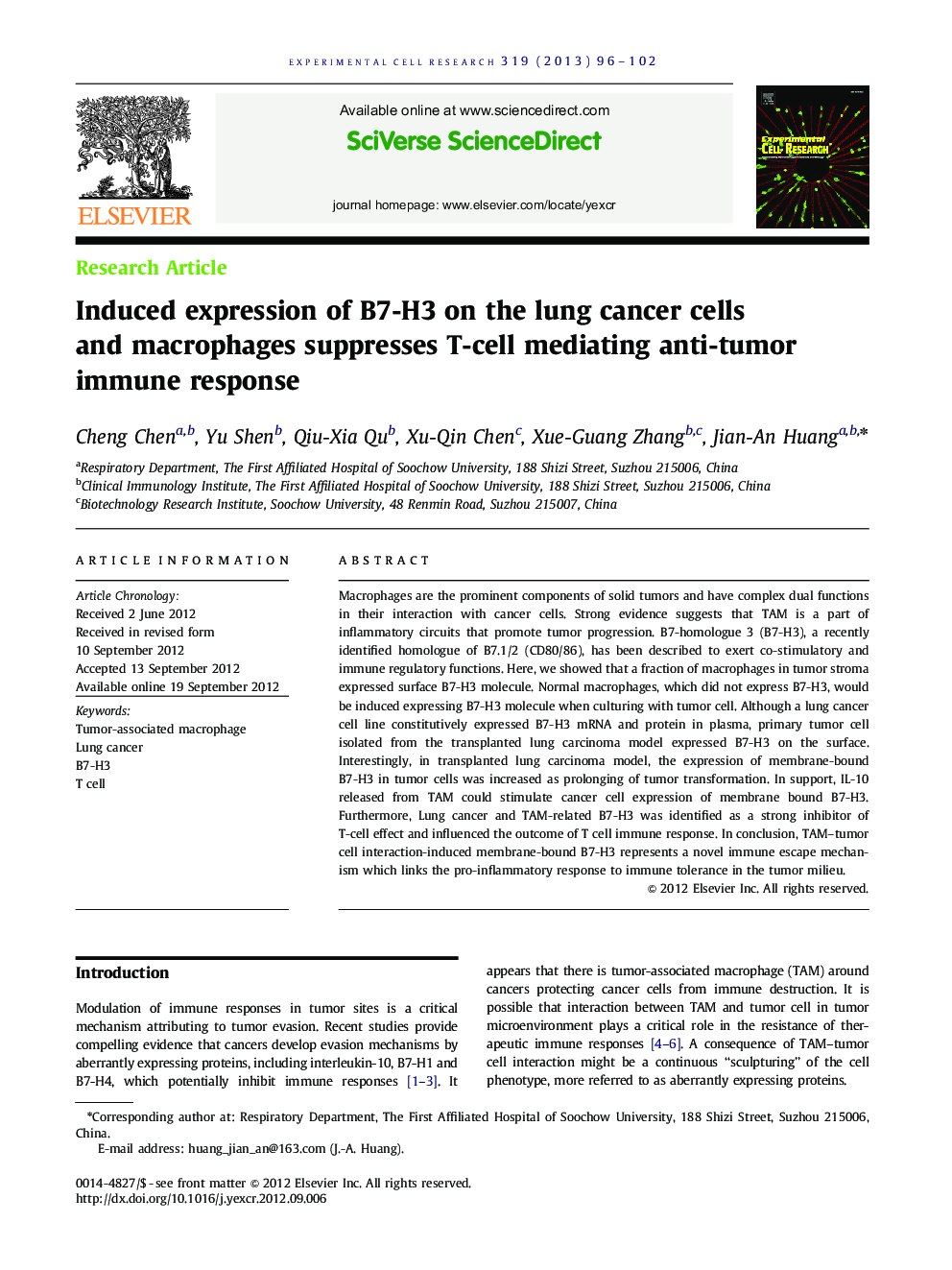| Article ID | Journal | Published Year | Pages | File Type |
|---|---|---|---|---|
| 2130591 | Experimental Cell Research | 2013 | 7 Pages |
Macrophages are the prominent components of solid tumors and have complex dual functions in their interaction with cancer cells. Strong evidence suggests that TAM is a part of inflammatory circuits that promote tumor progression. B7-homologue 3 (B7-H3), a recently identified homologue of B7.1/2 (CD80/86), has been described to exert co-stimulatory and immune regulatory functions. Here, we showed that a fraction of macrophages in tumor stroma expressed surface B7-H3 molecule. Normal macrophages, which did not express B7-H3, would be induced expressing B7-H3 molecule when culturing with tumor cell. Although a lung cancer cell line constitutively expressed B7-H3 mRNA and protein in plasma, primary tumor cell isolated from the transplanted lung carcinoma model expressed B7-H3 on the surface. Interestingly, in transplanted lung carcinoma model, the expression of membrane-bound B7-H3 in tumor cells was increased as prolonging of tumor transformation. In support, IL-10 released from TAM could stimulate cancer cell expression of membrane bound B7-H3. Furthermore, Lung cancer and TAM-related B7-H3 was identified as a strong inhibitor of T-cell effect and influenced the outcome of T cell immune response. In conclusion, TAM–tumor cell interaction-induced membrane-bound B7-H3 represents a novel immune escape mechanism which links the pro-inflammatory response to immune tolerance in the tumor milieu.
